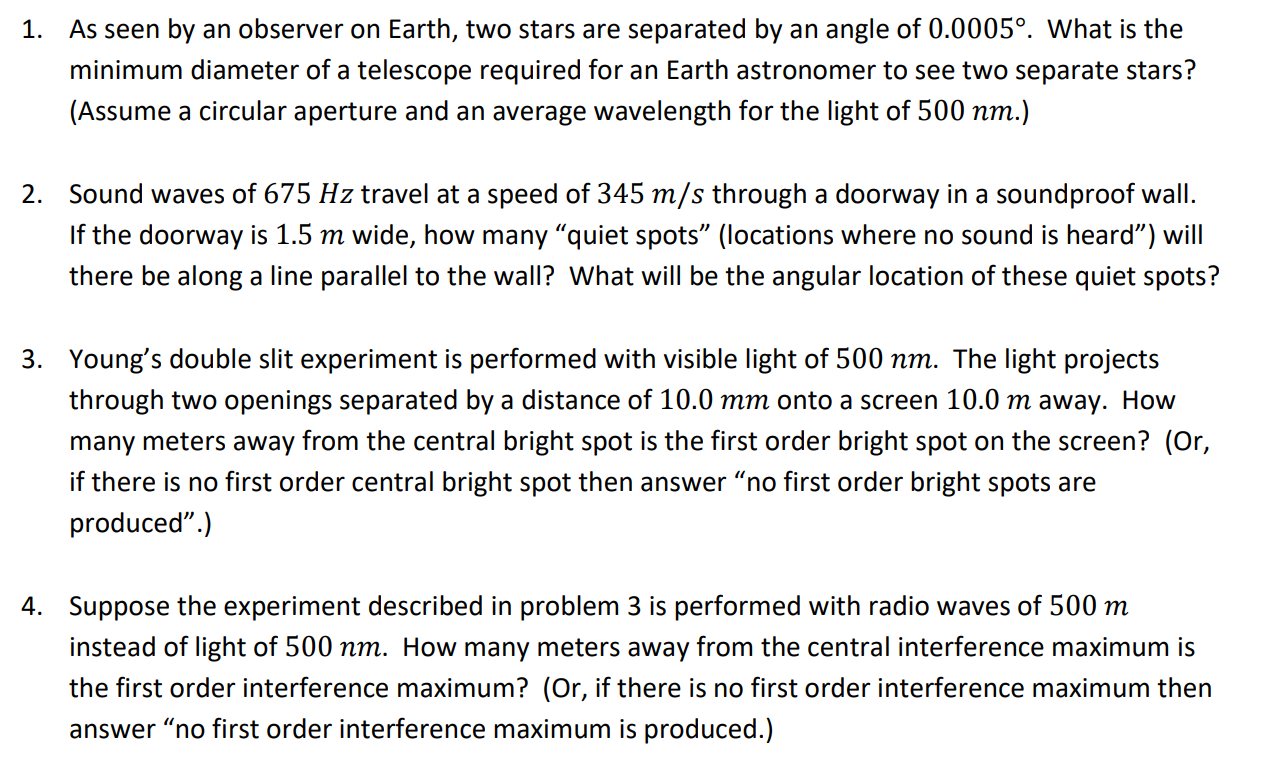Answered step by step
Verified Expert Solution
Question
1 Approved Answer
1. As seen by an observer on Earth, two stars are separated by an angle of 0.0005. What is the minimum diameter of a

1. As seen by an observer on Earth, two stars are separated by an angle of 0.0005. What is the minimum diameter of a telescope required for an Earth astronomer to see two separate stars? (Assume a circular aperture and an average wavelength for the light of 500 nm.) 2. Sound waves of 675 Hz travel at a speed of 345 m/s through a doorway in a soundproof wall. If the doorway is 1.5 m wide, how many "quiet spots" (locations where no sound is heard") will there be along a line parallel to the wall? What will be the angular location of these quiet spots? 3. Young's double slit experiment is performed with visible light of 500 nm. The light projects through two openings separated by a distance of 10.0 mm onto a screen 10.0 m away. How many meters away from the central bright spot is the first order bright spot on the screen? (Or, if there is no first order central bright spot then answer "no first order bright spots are produced".) 4. Suppose the experiment described in problem 3 is performed with radio waves of 500 m instead of light of 500 nm. How many meters away from the central interference maximum is the first order interference maximum? (Or, if there is no first order interference maximum then answer "no first order interference maximum is produced.)
Step by Step Solution
★★★★★
3.46 Rating (153 Votes )
There are 3 Steps involved in it
Step: 1
1 The minimum diameter of a telescope required to see two separate stars can be determined by the Rayleigh criterion which states that two objects are ...
Get Instant Access to Expert-Tailored Solutions
See step-by-step solutions with expert insights and AI powered tools for academic success
Step: 2

Step: 3

Document Format ( 2 attachments)
663e8154e2186_955198.pdf
180 KBs PDF File
663e8154e2186_955198.docx
120 KBs Word File
Ace Your Homework with AI
Get the answers you need in no time with our AI-driven, step-by-step assistance
Get Started


